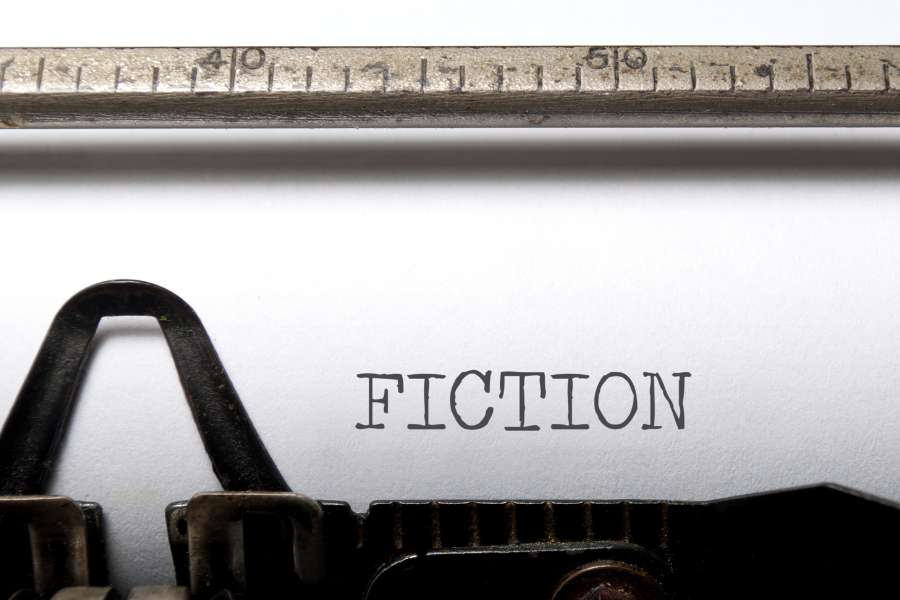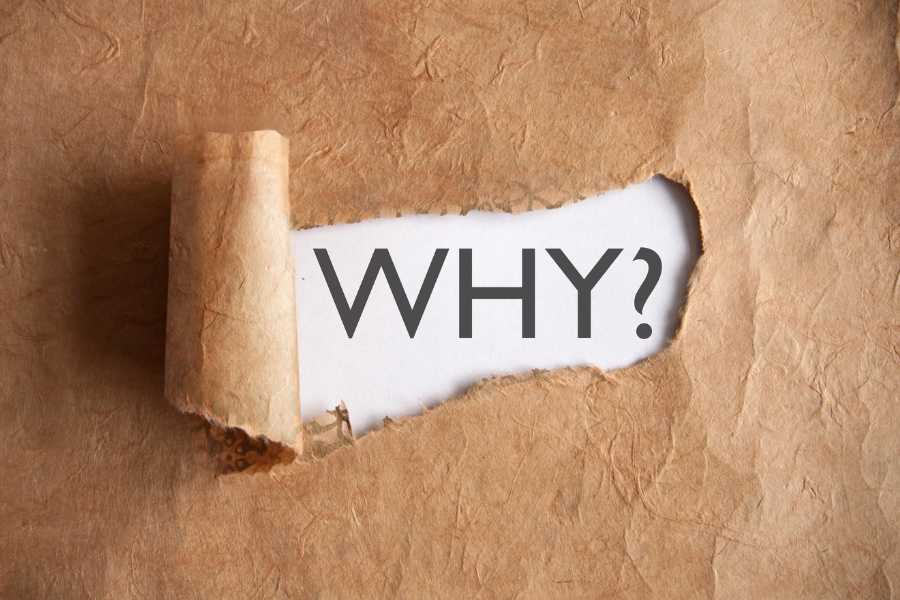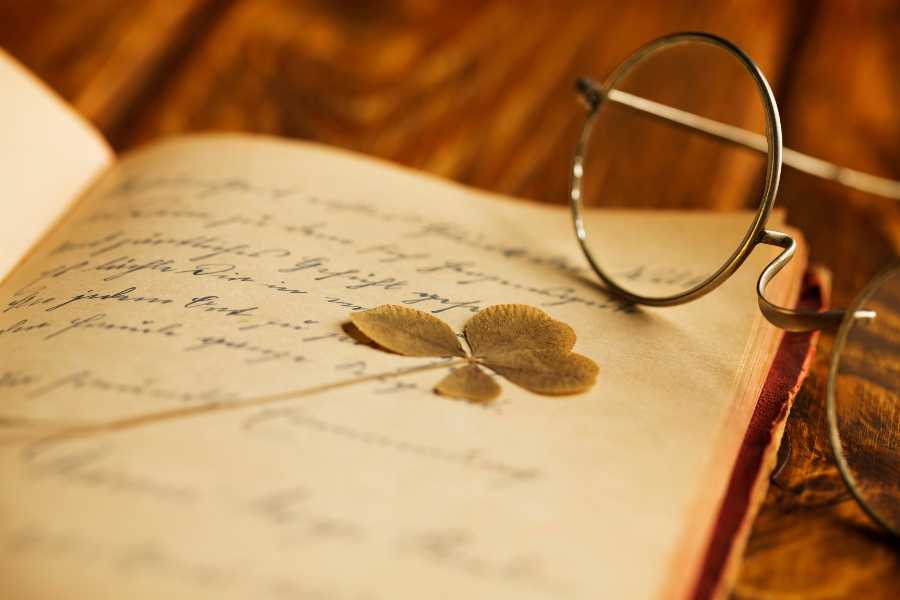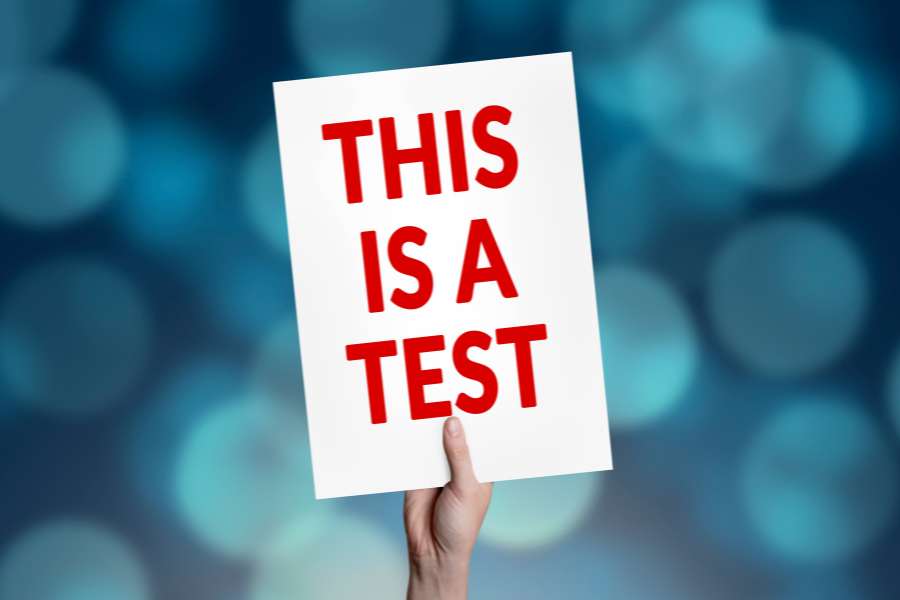You: Um, what is verisimilitude and do you have any verisimilitude examples to help me write better?
Me: Slow down. What does it sound like?
You: (Silence)
Me: No, really. Break it down.
You: (slowly) “Veri” + “similis” + “tude” (you snicker a bit at the last one.)
Me: “Veri” is Latin for “true.” And what does “Similis” sound like?
You: (Uncertainly) “Similar?”
Me. Yep, and for a very good reason. It means “like” in Latin.
You: (Proudly) And “tude” is a state of being, yo!
Me: Exactly, verisimilitude is the state of being similar to the truth.
Shall we dive in and further explore this literary device?

What is Verisimilitude?
In the creative arts, verisimilitude is the state your work achieves when it is beautifully believable. When no one can separate it from a plausible reality, even if that reality is made up.
At its best, it is an enthralling web.
At its weakest, it’s nothing.
You either have it or you don’t. There is no semi-verismilitude.
(Psst. Break it down.)
Types of Verisimilitude in Fiction

There are two types of verisimilitude in fiction, cultural & generic.
Cultural verisimilitude means the fictional work uses details from the expressed time period. In other words, it is historically accurate.
For example, before writing his literary work A Tale of Two Cities Charles Dickens completed extensive research. When he depicts the “devilry”of the Carmagnole, the dance of French revolutionaries, he knows exactly what he is describing. The scene terrifies Lucie Manette and us.
Generic verisimilitude refers to the work as a whole.
In other words, it is believable even if it’s fantasy. This is less precise and more forgiving than cultural. Could it have really happened?
Brave New World by Aldous Huxley is extreme, yes.
But very thought out.
Every level of Huxley’s future is terrifyingly rooted in our world. This fact is made even more frightening when you consider he wrote before DNA, cloning, pill popping, and pornography addiction.
Verisimilitude: Historically Speaking
On historical verisimilitude, Plato opened the discussion through its cousin, mimesis. He states art is really just imitation, twice removed from its original source, God.
All artists are but shadows of the truth, or veris.
(Enter Macbeth, briefly:)
“Life’s but a walking shadow, a poor player
That struts and frets his hour upon the stage
And then is heard no more.”
Aristotle, Plato’s pupil, goes on to say that the “imitation of action” or the story of a hero’s fall is art.
(Exit Macbeth, shamed.)
Let’s try someone less “classic.”
Enter Romantic era poet Samuel Taylor Coleridge.
He made verisimilitude real for writers by using another phrase:
“a willing suspension of disbelief.”
AKA, the story is so enthralling you willingly go along with the writer.
Even if he takes you for a ride on a cursed boat with an ancient mariner and 200 dead sailors glaring at you with their “glittering eye.”
It could happen!
The Importance of Verisimilitude & Why You Should Use It

Believability is what everyone wants.
Your mom wants it when she tells you stories of her youth that always seem to have an annoying lesson in them. Your lawyer wants you to have it when questioning you on the stand.
So, a writer needs to have their proverbial ducks in a line when writing.
Otherwise, you’ll lose your readers.
One false step, and they’re out.
One improbable action, awkward retort, or ridiculous connection, and the audience will toss you aside.
No one’s got time for a faker or a slacker.
Use of Verisimilitude in Modern Culture
Verisimilitude is every form of art and culture. Its creation is what man has struggled to perfect in music, sculpture, tv, film, and literature.
Just like Plato said, we want to imitate perfection perfectly but in doing so we are merely imitating and not really creating art.
But it’s kind of awesome how we do it.
It’s awe inspiring how many worlds have been created and then peopled by the fires of human imagination.
Let’s take a look at a few verisimilitude examples…
Verisimilitude Examples in Classic Literature
Moby Dick, Herman Melville
“The White Whale swam before him as the monomaniac incarnation of all those malicious agencies which some deep men feel eating them, till they are left living with half a heart and half a lung.”
Moby Dick is the implausible story of an unhinged sea captain’s search for the elusive white whale who devoured his leg and caused all his pain.
Melville makes Ahab’s hunt believable with his extremely detailed examination of whaling and so achieves verisimilitude.
Hamlet, William Shakespeare:
“O villain, villain, smiling, damned villain!
My tables, – meet it is I set it down,
That one may smile, and smile, and be a villain.”
In Act 1 scene 5 of Hamlet, the prince learns, by way of ghost reveal, his father was murdered by his uncle.
Claudius has since claimed the throne and Hamlet’s mother for his own. The new king appears heartbroken and honest, and no one in the court suspects Claudius but Hamlet.
Thus the murderer achieves verisimilitude.
Crime and Punishment, Fyodor Dostoevsky
“He walked on without resting. He had a terrible longing for some distraction, but he did not know what to do, what to attempt. A new overwhelming sensation was gaining more and more mastery over him every moment; this was an immeasurable, almost physical, repulsion for everything surrounding him, an obstinate, malignant feeling of hatred.”
What Dostoevsky does well is capture the paranoid interior monologue of a guilty conscience.
This is his verisimilitude.
Raskolnikov’s shame and justifications continue almost endlessly in this famous Russian novel of sin and redemption.
Poetic Verisimilitude Examples

Canto 8, Dante’s Inferno
“My guide descending stepp’d
Into the skiff, and bade me enter next
Close at his side; nor till my entrance seem’d
The vessel freighted. Soon as both embark’d,
Cutting the waves, goes on the ancient prow,
More deeply than with others it is wont.”
Verisimilitude is achieved in this 12th century text with the mention of weight. The Pilgrim Dante is human and has earthly weight. Virgil, his guide through Hell, is a weightless soul.
Therefore, when Dante notes the ferry has “freighted” and goes “more deeply” than it did when transporting souls, he adds believability to the allegory.
Rime of the Ancient Mariner, Samuel Taylor Coleridge
“With throats unslaked, black lips baked,
We could nor laugh nor wail:
Through utter drought all dumb we stood!
I bite my arm, I suck’d the blood,
And cried, A Sail! a Sail!”
In this gothic-Romantic era poem by Samuel Taylor Coleridge verisimilitude is achieved in all of its gory glory.
Sailors dying of dehydration at sea would have baked black lips and no source of moisture to wet their throats enough to speak, except for the blood moving in their veins.
But ick, Samuel. Ick.
Digging, Seamus Heaney
“The cold smell of potato mould, the squelch and slap
Of soggy peat, the curt cuts of an edge
Through living roots awaken in my head.
But I’ve no spade to follow men like them.
Between my finger and my thumb
The squat pen rests.
I’ll dig with it.”
Irish poet Heaney captures the life of his father and grandfather in his poem that is a tribute to their lives of toil.
And an emphatic declaration on his part to “dig” with his pen instead of a spade.
Heaney’s sensory details create verisimilitude.
Pop TV Examples of Verisimilitude

Downton Abbey
Set around the turn of the 20th century, this historical drama recounts events like the sinking of the Titanic, the Spanish Influenza, and WWI.
The finer details of the linens and gowns and the nuances of class struggles among the servants make this popular series an excellent example of verisimilitude.
Game of Thrones
This HBO series brought the fantasy novels of George R.R. Martin to life with its expansive kingdoms and complex characters.
Only in Martin’s novels will you find several pages of indices delineating the ruling families of Westeros and Essos.
And only in this series will you submerge yourself in another world that you may wish was real.
But that’s mostly because of the dragons.
Martin’s attention to detail is unparalleled and represents verisimilitude at its best.
That 70’s Show
Since the first two examples were pretty serious, we thought it would be good to show you that verisimilitude also exists in comedy.
That 70’s Show was an American sitcom that aired from 1998 to 2006 and recounted the coming-of-age of six teenagers in make believe Point Place, Wisconsin.
What makes this show believable is that the characters are skinny, dorky, damaged, horny, fashion challenged, and occasionally high just like the teens of middle class America. Their everyday is like our everyday, only slightly more funny.
Verisimilitude in Visual Art
Michelangelo
Painter, architect, and poet of the High Renaissance, Michelangelo is perhaps best known for the Pieta and David.
In the Pieta, the weight of Mary’s motherhood is made real as she holds the broken body of Jesus.
Michelangelo’s depiction of this moment is unique and of tantamount importance as it marries classicism and realism.
He achieves verisimilitude in marble.
Leonardo da Vinci
Painter, engineer, scientist, theorist, sculptor, and architect, da Vinci is perhaps best known for his paintings.
But he also became famous for his notebooks depicting everything from anatomy to palaeontology. Considered a genius, he embodied the Renaissance humanist ideal.
His most famous works include the Mona Lisa and The Last Supper.
The latter is known for its complexity and subtle nuances; every character in it has his own relationship with Jesus, and his own sense of verisimilitude.
Carol A. Feurman
Feurman is pioneer of hyperrealist sculpture and is best known for her super-sized depictions of female swimmers. Her art expresses her ongoing fascination with water and swimming.
For the last forty years she has created her massive but life-like (read verisimilitude) sculptures in bronze, resin, and marble.
The image above is of her sculpture Miniature Quan, 2014.
7 Easy Ways to Add Verisimilitude to Your Writing

Hopefully by now you can see how verisimilitude is key to creating a believable story, fantastical or not.
But how do you create it in your own writing?
It’s easy. It just takes some straight talking and smart thinking.
Here are a few tips…
1. Base Characters on People You Know
Pick a character trait, a smirk, a way of speaking, a habit from your own family or peer group and assign it to one of your characters.
It’s easy to focus on the things you hate, but try to look for things that make someone charming, vulnerable, quirky, or interesting.
These same attributes will add believability to your characters and lend realism to your yarn.
2. Include Relatable Emotions & Traits
As mentioned above, choose traits from people you know and then shake these traits onto the characters you create.
When you base your characters on real people, it’s easier to imagine them in the scenes of your story.
Then, when you hit a writing wall, ask: what would he/she/they say right now?
What makes sense?
Try a few things out, write a few pages, see how it goes. Keep what is good and don’t be afraid to hit delete and start over.
3. Delineate the Details
Details make all the difference, especially when creating a whole new world like George R.R. Martin or immersing your audience in a different time period like Julian Fellows.
And if you are going historical, just make sure you’ve done your research. Especially in a movie. No one except your critics enjoys a mistake like this.
4. Research Common-Known Facts
As with researching details, make sure you are well versed in commonly known facts about the area or the time period of your work. Find ways to weave these facts into your text.
Upton Sinclair, in his depictions of labor and sanitary conditions in turn-of-the-century America, caused a public uproar with his level of verisimilitude in The Jungle.
5. Avoid Contradicting Yourself
In addition to fact checking, check yourself as well. Once you’ve established a truth in your new world, don’t go back on it; make it sacred.
Your writing should never confuse or bewilder your reader. You should never make them go, “huh?”
6. Engage the Reader’s Senses
Like the art of Michelangelo and da Vinci, access your audience’s emotions by letting them feel the burn of betrayal and the sting of jealousy.
If your story involves a feast, let the audience smell and taste it.
But don’t get too caught up in the details that you forget to tell your story. Balance is key. Just ask Carol Feurman’s models.
7. Use Realistic Dialogue
Dialogue should amplify your plot, not convolute or impede it. Consider places where your text seems bogged down by long or overly descriptive passages.
Can some of it be simplified with a well timed conversation?
Can these exchanges be places where you can insert those character traits you’ve decided to borrow from friends, family, and foes?
Verisimilitude: Reconstructing Reality
Linked below are resources for each of the following categories:
- Create suspension of disbelief
- Realism in biography and autobiography
- Verisimilitude and historical fiction
- Verisimilitude vs. truism
From tips to essays to masterclass, click and seek if you need more support in your search for verisimilitude.
Test Yourself in Verisimilitude

- How can I quickly create a sense of verisimilitude?
- Is verisimilitude important in movies?
- How is dialogue helpful in creating verisimilitude?
- Will giving my character a habit or tic a good way to make them more believable?
- How does fine art create verisimilitude?
- How do I work on making my dialogue more believable?
- How can I fact check myself?
Verisimilitude Examples Done: it’s Your Turn Now
Still here? You’re invested, aren’t you?
Or are you procrastinating? Hmmm.
See what I did there?
I called you out.
And in doing so, I made this post more real to you and made the struggle to write more real to you as well, because I acknowledged what every writer knows in their marrow.
It’s hard to start.
But the best way to improve your writing is by writing.
The second best way is by reading good writing.
So get to it.
You want to write something that feels real? Then close this page and open your own.
Break a pen.



